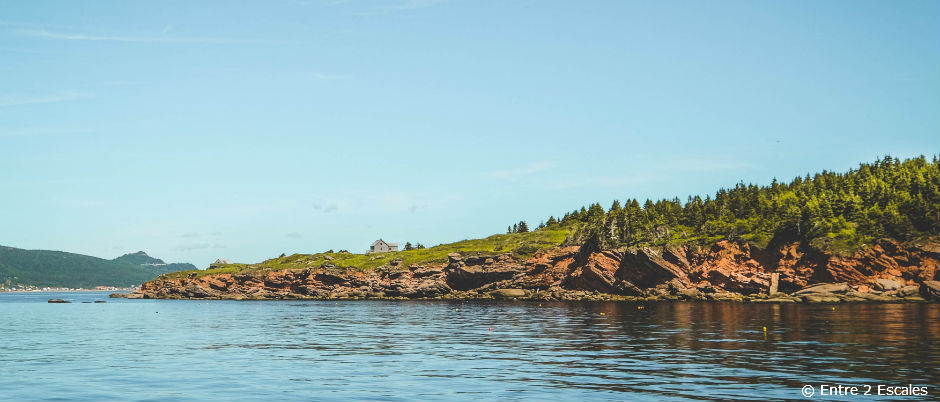The Québec maritime Blog

- Entre 2 Escales
Bonaventure Island’s Northern Gannet Colony: A Breathtaking Site!
Standing on the Percé wharf, my gaze is drawn immediately to the famous rock bearing the same name. And straight ahead lies Bonaventure Island with its magnificent seascapes. The island shelters a priceless treasure: the tens of thousands of northern gannets that have taken up residence there. My travels have taken me far and wide, but I’ve never seen anything like it. Bonaventure Island is hands down one of the most amazing places I’ve ever experienced.

At 9 a.m. I climb aboard the boat that will take me to the island. During the crossing, employees of Parc national de l’Île-Bonaventure-et-du-Rocher-Percé explain that over 200,000 birds live on the island, including a colony of 110,000 northern gannets. We see them from the distance, nestled along ledges of the rocky cliffs that surround the island. With camera in hand, I capture my first images: a bird diving into the water to catch its breakfast, three seals basking in the sun . . . and this is just the beginning!
Once on the island, our guides point out the four hiking trails that lead to the plateau where visitors can observe the northern gannets. Les Colonies trail is the easiest and most accessible, and Les Mousses trail offers spectacular views of the island’s cliffs. If you’re a history buff like me, you’ll especially enjoy the Chemin-du-Roy trail.

Bonaventure Island has a fascinating history. Discovered in 1534 by Jacques Cartier, the island played an important role in the cod-fishing industry and in the region’s development. You can learn more by visiting the 20 or so 19th-century homes that have been restored or rebuilt. Great effort was taken to preserve the site’s rich heritage. Park director Rémi Plourde was kind enough to show me around. He explained that the aim was to recreate the feel of the times and pay homage to the families that shaped the region’s history.
Of course one of the main attractions on the island is the colony of northern gannets that have taken up residence there. About 110,000 of these birds return during breeding season each year. We hear their distinctive call as we begin our approach. You can just imagine how unbelievably loud they are, all crying out at the same time! We can see them nesting as we get closer. Few locations in the world allow you to observe a colony of this size at such close range. It’s an incredible site.

Though it seems like northern gannets have always lived on Bonaventure Island, the very first mention of the birds in a historic document only dates back to 1860. Just 3,000 of these creatures inhabited the island at the time. The island became a bird sanctuary in 1919, and the population grew quickly. The geology of the site, the absence of predators and the abundance of food in the Gulf of St. Lawrence provided a perfect location for the gannets to set down for a while.

Rémi explained to me, however, that the supply of fish on which northern gannets feed is dwindling due to climate change. As the water gradually warms, the fish migrate north, leaving the bird colony in a precarious situation. In the last several years, the number of hatchlings (or the number that survive until adulthood) has dropped significantly. Though these findings are disappointing, you can rest assured that research teams from the Canadian Wildlife Service and from Université du Québec à Rimouski are closely monitoring the situation.
Bird lovers will be interested to learn that Bonaventure Island is home to no fewer than 224 species of seabird (I won’t list them all here!), which means you can watch these amazing creatures for hours on end.
Before leaving Bonaventure Island, I stopped at Resto des Margaulx to sample their famous fish soup. It was absolutely delicious! Once I was back on board the boat for the return trip, I simply couldn’t take my eyes off the island. One thing is certain: this beautiful day in the company of northern gannets will remain engraved in my memory for years to come.
(2) comments
Sharon grimstead
Beautiful birds.
kelly MacKay
Lovely read, I am heading around the Gaspe the first week of July. Very much looking forward to it.